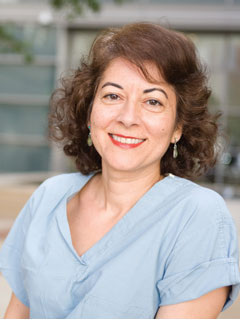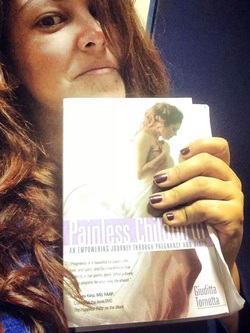
Habibi has been taking care of expectant mothers since 2005
She has a master of science in nursing and a master of
arts in anthropology
What does a midwife do?
We care for pregnant women and their families using a midwifery model of care that views childbirth as a normal process. We perform routine prenatal care — we spend 15-30 minutes with patients during each of their visits, focusing on nutrition, exercise, birthing plans and childbirth education. When one of our clients is in labor, the midwife who is working in the hospital that day helps the woman and her family during labor and birth. The midwife supports and counsels the woman in her choices and helps her to have the kind of birth that she has always envisioned, while making sure mom and baby are healthy. We also share our midwifery model of care, our perspectives, and our expertise with obstetrical residents at Ronald Reagan UCLA Medical Center.
Why would a woman choose to give birth with a midwife?
Women have heard that they have a better chance of a drug-free birth with the UCLA midwives. They want the support, education and advocacy we provide for shared decision-making. They come to us at the beginning of their pregnancy or transfer their care in the middle or the end of pregnancy. Usually they hear about us from friends, doulas or childbirth educators.
What are some pain-management techniques for women who don’t want medication?
There are many ways women manage their pain without medication. As part of their childbirth preparation classes, they may use breathing and relaxation techniques. There are many other options including walking, changing position, hydrotherapy (sitting or standing under the shower), swaying, aromatherapy, encouraging words, music, self-hypnosis and counter-pressure points in the hips and lower back. The UCLA obstetrician (OB) physicians group, the OB nursing director and nursing staff, and the OB residency program all support midwifery care. Because of that support, it’s easy for a woman to be walking around during her labor, it’s acceptable and routine for her to use the shower for hydrotherapy and pain management. This is what makes Ronald Reagan UCLA Medical Center labor and delivery care unique in Los Angeles. And it’s comforting for women to know we have the full range of medical technology and intervention available for them if they need it.
What do you enjoy about your job?
I like meeting families and learning about them and their beliefs and being present during one of the most exciting times of their lives. It’s very rewarding for me to sit and listen and then come together with a patient about a decision. There are many decision points a patient faces throughout her pregnancy and during childbirth itself — how she wants to manage her pain, whether she wants to induce labor, fetal monitoring, positioning, showering. We are there to support a woman during those intense times when she is thinking, “I can’t do this; this isn’t working, I can’t do it.” It’s very helpful for a woman to have someone by her side telling her she can do it, that she is doing it.
What is the most difficult part of the job?
The difficult part is being called at 2 a.m. after you just finished attending a birth at midnight. You need to have stamina and the ability to be present with each woman and her family. A lot of women come to midwives wanting to have the birth they have seen on YouTube where the woman is lying in a birthing tub and is pushing her baby out, seemingly, without any effort. But, that is not everyone’s birth story. Our bodies are different, each woman’s pelvis is different, and so our birth stories are going to be very different. I have seen women have easy childbirths and I have seen women suffer for days to achieve a natural childbirth. But the most common experience women have is a normal, beautiful birth with a healthy mom and baby.
What are your other interests or hobbies?
I am interested in international women’s health issues and women’s reproductive rights. I like to hike, read, travel and cook. I also take French classes.

 RSS Feed
RSS Feed
